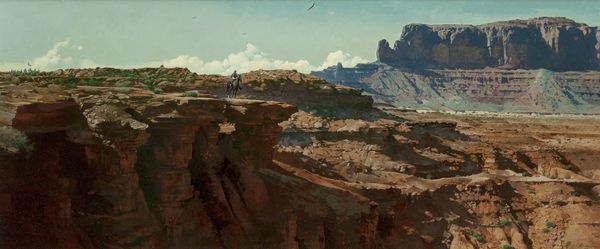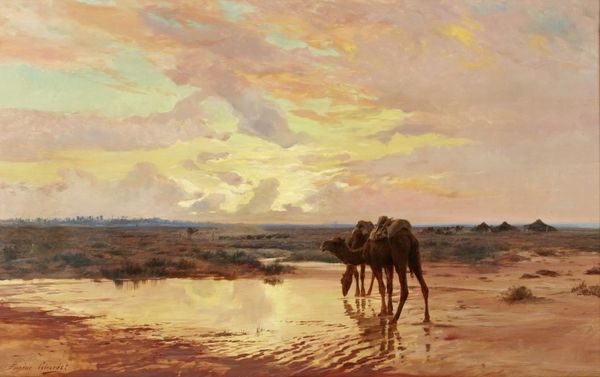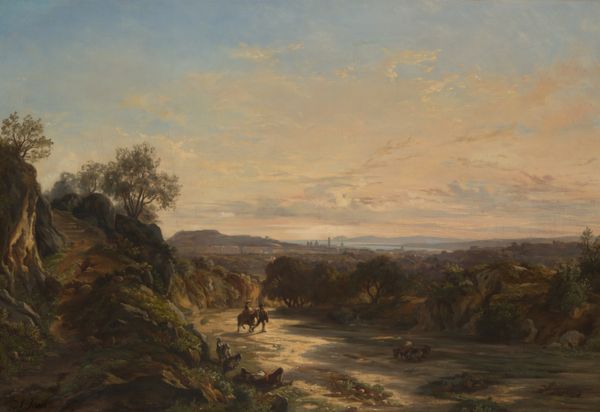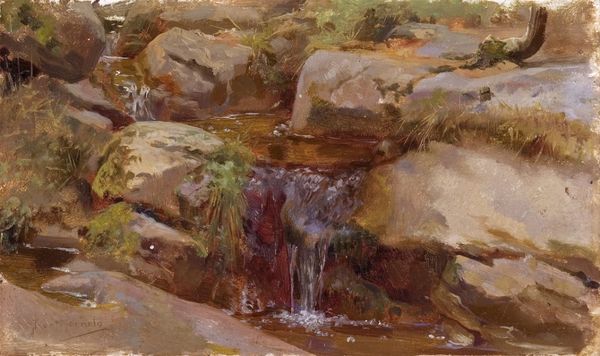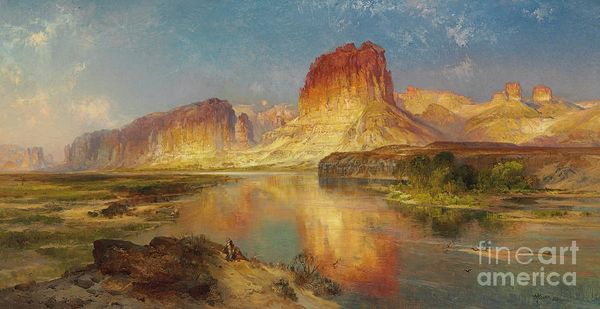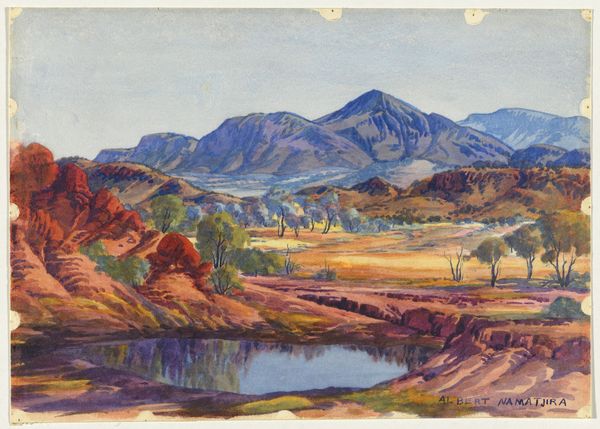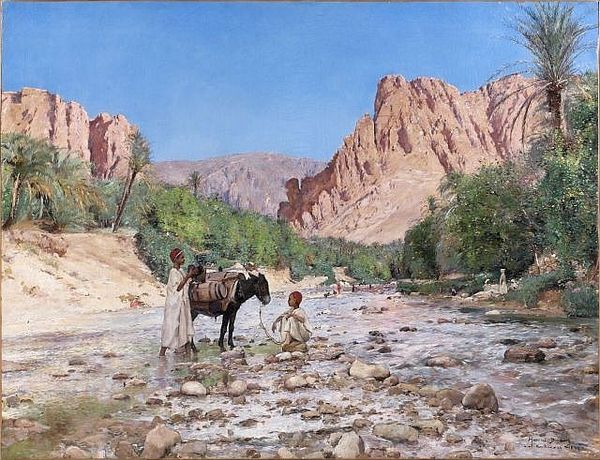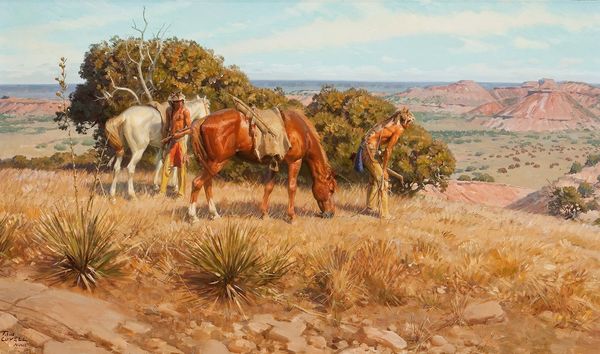
painting, oil-paint
#
painting
#
impressionism
#
oil-paint
#
landscape
#
figuration
#
oil painting
#
orientalism
#
islamic-art
#
realism
Copyright: Public domain
Curator: Before us, we have a captivating oil painting, “Loued Mzi Flood,” attributed to Nasreddine Dinet. Editor: My first impression is one of immense tranquility, despite the bustle of figures; it evokes a sense of suspended time. Curator: Dinet was deeply invested in depicting North African life and culture, especially those of Algeria. His art functions almost like ethnographic documentation, preserving scenes of daily life. Think of it as cultural memory visualized. Editor: It’s impossible to ignore the colonial gaze inherent in Orientalist paintings like this. While appearing to simply reflect everyday life, doesn’t it also risk exoticizing and ‘othering’ Algerian subjects for a Western audience? Curator: That's a crucial point. The recurring image of the nomad is less about specific people than it is a symbolic reference of freedom and timeless traditions rooted in the culture of Algeria and North Africa more broadly. Water is a recurrent symbolic figure throughout his artistic production; it suggests the unconscious flow and connectivity among communities and the broader North African world. Editor: Absolutely. Consider how water acts almost as a mirror, reflecting and shaping social interactions and access to resources in arid landscapes. Who controls access to this lifeblood, and who is relegated to the periphery? Curator: There is an interesting intersection between faith and tradition in Dinet’s work as it focuses on religious practices embedded in daily rituals, and his art became highly influential to promoting and supporting Algeria independence from France. Editor: By focusing on the representation of daily life, this piece, perhaps unintentionally, creates a visual narrative of a population that refuses to disappear despite facing cultural and political dominance. Curator: Examining "Loued Mzi Flood," has highlighted how artworks can serve multiple purposes, both reflecting and shaping cultural perceptions. Editor: It compels us to acknowledge the ongoing need for cultural dialogue when interpreting artworks with contested histories, as a step forward towards redressing complex and difficult stories through a nuanced lens.
Comments
No comments
Be the first to comment and join the conversation on the ultimate creative platform.

